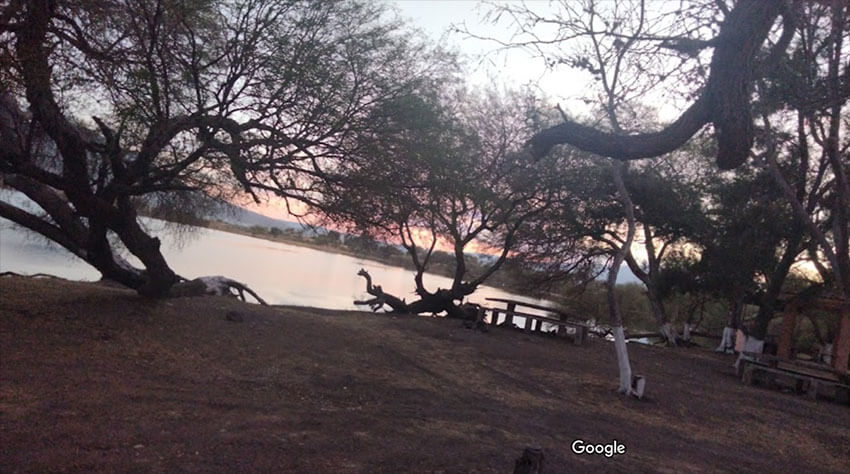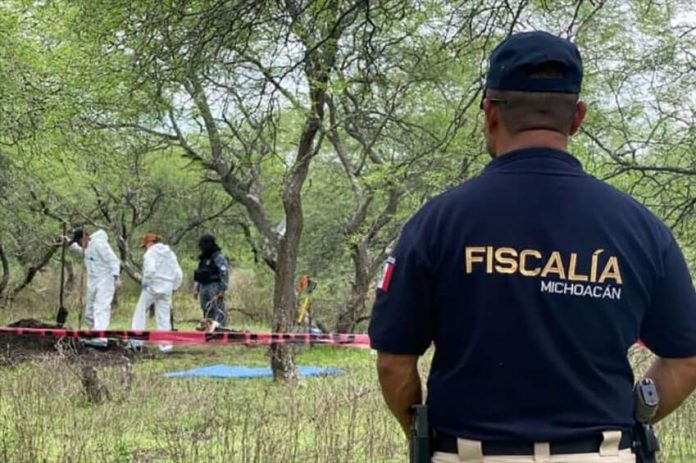Nestled between mountains near the Michoacán-Jalisco border, Los Negritos used to be a weekend destination for spending a little time by the lake, throwing some meat on the grill and having family fun.
Now it might be one of the largest clandestine cemeteries in the country.
Over the past three weeks, according to a report in the newspaper El Universal on Monday, officials from Michoacán and Mexico’s Attorney General’s Office have exhumed 25 bodies from the Los Negritos, a natural area in the Villamar municipality, and activists say as many as 500 people could be buried there.
All the while, as the work progresses, trucks with the initials of the Jalisco New Generation Cartel (CJNG) are reportedly circulating nearby as a show of muscle.
[wpgmza id=”363″]
The deceased buried there are suspected of being victims of the cartel, and El Universal tabbed the place a narco-cementerio. It is located in “The Corridor of Death,” so named by residents for the violence, forced disappearances, kidnappings, massacres, and attacks against municipal, state and federal forces that occur in the region.
The area includes many municipalities, such as Zamora, Jiquilpan and Sahuayo, and a portion of it currently is in dispute between internal groups of the Jalisco-headquartered CJNG, El Universal reports. Just last month, Zamora was named the world’s most violent city of 2021 in a study by a Mexican non-governmental organization.
Of the bodies found through Sunday, eight were identified and 17 remain unknown.
A group of people who feel their relatives might be buried there, and who say there could be as many as 500 dead bodies or even more, put pressure on the authorities to begin the excavations.

The group was formed by Isis del Rocío Macías Gracián of San Pedro Cahro, Michoacán, after her brother was kidnapped and, five months later, found dead in the area. It’s called “San Pedro Cahro en Busqueda de Ángeles,” meaning “San Pedro Cahro in search of angels.”
El Universal reported that Macías Gracián’s efforts led authorities to arrest those responsible for the kidnapping and murder of her brother, but her fight didn’t end there. She opted to keep working on behalf of families searching for missing loved ones.
“I continue in this because I know what it feels like to have a missing relative and that there is no one who gives you support or is encouraged to carry out this type of search,” she said.
Regarding the Los Negritos narco-cementerio, she said, “There is information that there may even be human remains buried on that property that have been there for seven or eight years.”
She also said some of the bodies will not be able to be rescued because the site is in a geothermal zone with volcano vents. “Many of the bodies could be inside the boiling wells or the lake,” she said. “The people who are from here know that if that happened, those bodies can no longer be rescued.”
A woman quoted in El Universal, whose name was withheld for security reasons, said her sister, who disappeared two years ago, could be buried in the Los Negritos grave.
“With what is known and what is being seen in the Los Negritos lake, I feel that she is there, too, because that was where the bad guys always took them,” she said. “My sister was very cheerful. She liked to party a lot. She had many friends that perhaps had something to do with” her disappearance. Neighbors told her that armed people arrived in trucks and took her sister and another girl.
The search and excavation work in Los Negritos has been headed by personnel from the Michoacán prosecutor’s office, supported by state public security and police from nearby municipalities, including Villamar. A police dog named Manchas has been instrumental in finding many of the bodies.

“There are already more than 110 points where we believe there are remains of buried victims,” said a member of San Pedro Cahro en Busqueda de Ángeles.
As the work continues, criminal convoys are driving around the area at high speeds and revving their engines, an attempt to “try to scare away the security and law enforcement agencies,” El Universal reported.
The newspaper quoted one resident as saying that the area used to be nice before criminal groups took it over and made it an extermination camp and clandestine cemetery.
“We all know what has been happening here for many years,” he said. “We heard the bam! bam! bam! of the machine guns every day, but if we said something, they killed us.”
With reports from El Universal
